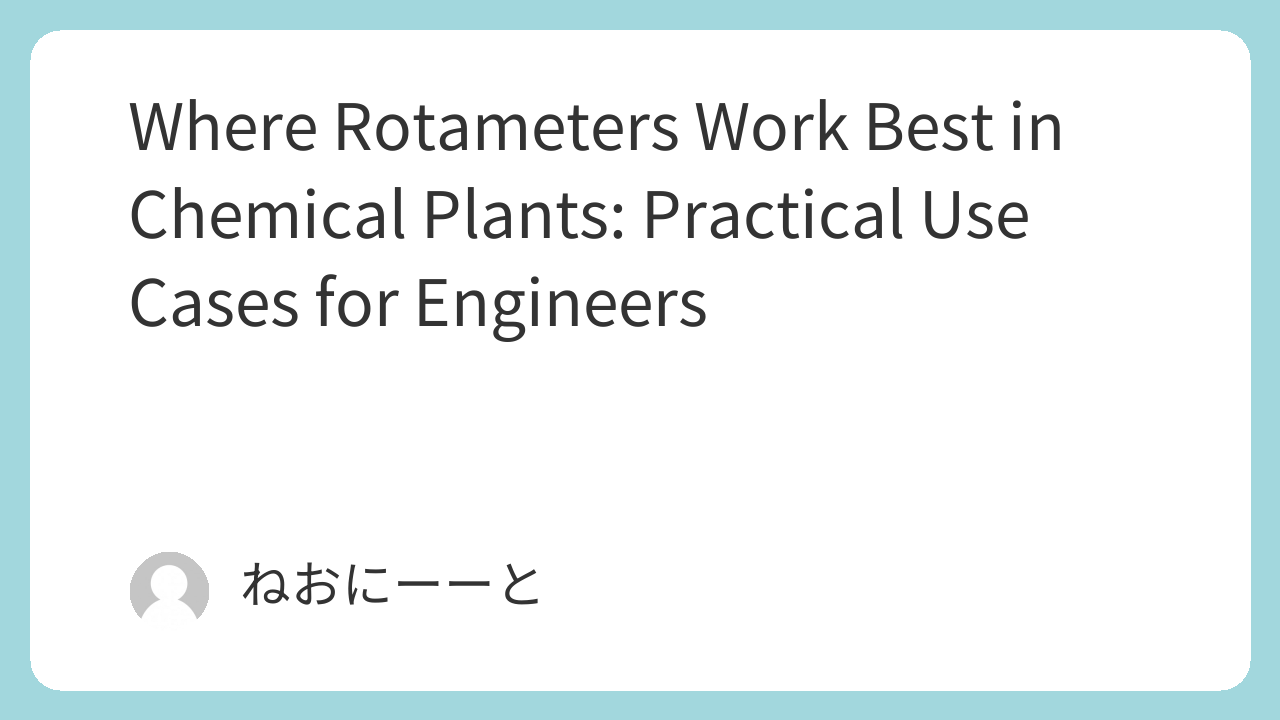Chemical plants handle many types of liquids and gases, and keeping flow rates stable is essential for safety and process control.
Among the many flowmeter types available, the rotameter (variable area flowmeter) remains popular because it is simple, inexpensive, and easy to install.
This article introduces three practical situations in chemical plants where rotameters are especially useful. The focus is not on theory, but on how engineers actually use them in the field.
Why Vortex Flow Meters Are the Best Choice for Steam in Chemical Plants
Practical Methods to Estimate Utility Usage in Chemical Plants Without Flow Meters
■ Why Rotameters Still Matter
Even with modern options—magnetic, vortex, Coriolis, and positive-displacement meters—rotameters occupy a clear niche:
- Low cost
- Very small pressure drop
- No straight-run piping required
- Works for gases and clean liquids
- Accuracy is modest but enough for “range monitoring”
This makes rotameters ideal when you only need to confirm that the flow is within a reasonable range, rather than controlling it precisely.

■ Use Case 1: Nitrogen Purging
The most common application of rotameters in chemical plants is monitoring nitrogen purge flow.
Nitrogen is used extensively to prevent fires and explosions. Because nitrogen is expensive, plants want to avoid unnecessary consumption.
A rotameter allows operators to manually set the valve and visually confirm that the purge stays within the target range during routine rounds.
Why rotameters work well here:
- Nitrogen gas is clean → no clogging
- Low cost → easy to install on many points
- No need for high accuracy
- No requirement for straight pipe lengths
- Suitable for outdoor installations
For critical systems automatic control may be used, but for tanks, vents, and simple continuous purges, rotameters are the most practical choice.
■ Use Case 2: Vacuum System Air Bleed
Vacuum systems sometimes require air to be intentionally introduced to fine-tune the pressure.
There are two ways to control vacuum:
- Adjust the vacuum pump speed
- Bleed a small amount of air into the system
Option ① is often difficult. Option ② is simple and widely used.
When operators can see the air bleed amount, vacuum adjustment becomes much easier.
Although precise flow control isn’t required, monitoring the range of air bleed is important because introducing too much air may increase the risk of ignition or contamination.
A rotameter is ideal because it’s inexpensive and provides a simple visual indication of airflow.
■ Use Case 3: Monitoring Reflux Flow in Distillation
Rotameters are often used for reflux monitoring in distillation systems, even though they are more commonly used for gases.
Reasons they work well here:
- Reflux liquid is clean (evaporated → condensed)
- Low risk of fouling
- Only a rough flow range is required
- The distillation vapor rate naturally fluctuates, so ultra-precise reflux control is unnecessary
For the distillate line (product side), plants may use a more accurate flowmeter.
But on the reflux side, the operator mainly needs to verify that flow exists and stays within a reasonable operating band, making rotameters a perfectly suitable tool.
✅ Conclusion
Rotameters continue to play an important role in chemical plants thanks to their low cost, simplicity, and minimal installation requirements.
They are especially effective when:
- High accuracy is not required
- The process fluid is clean
- Operators just need visual confirmation of the flow range
Typical applications include nitrogen purging, vacuum system air bleed, and reflux monitoring in distillation.
In these situations, rotameters offer a practical, low-maintenance solution for day-to-day plant operation.

Comments